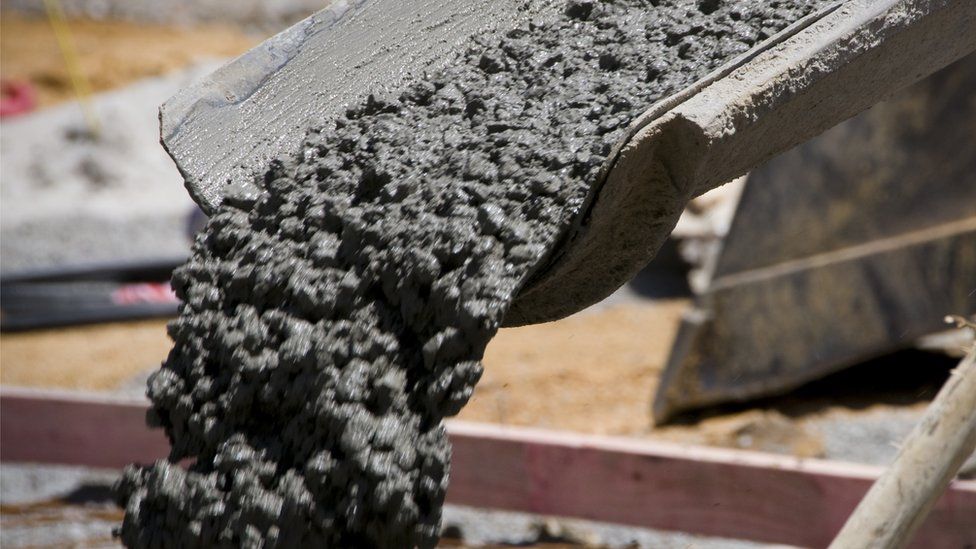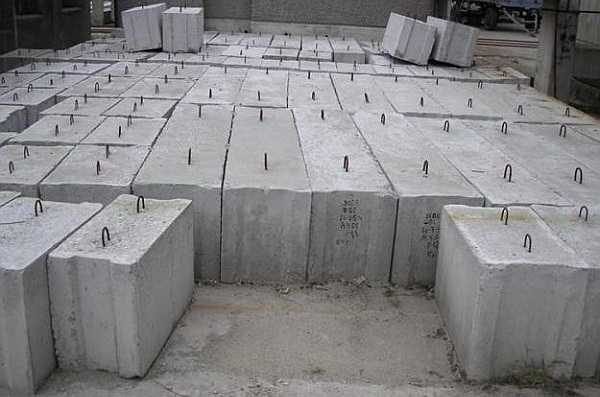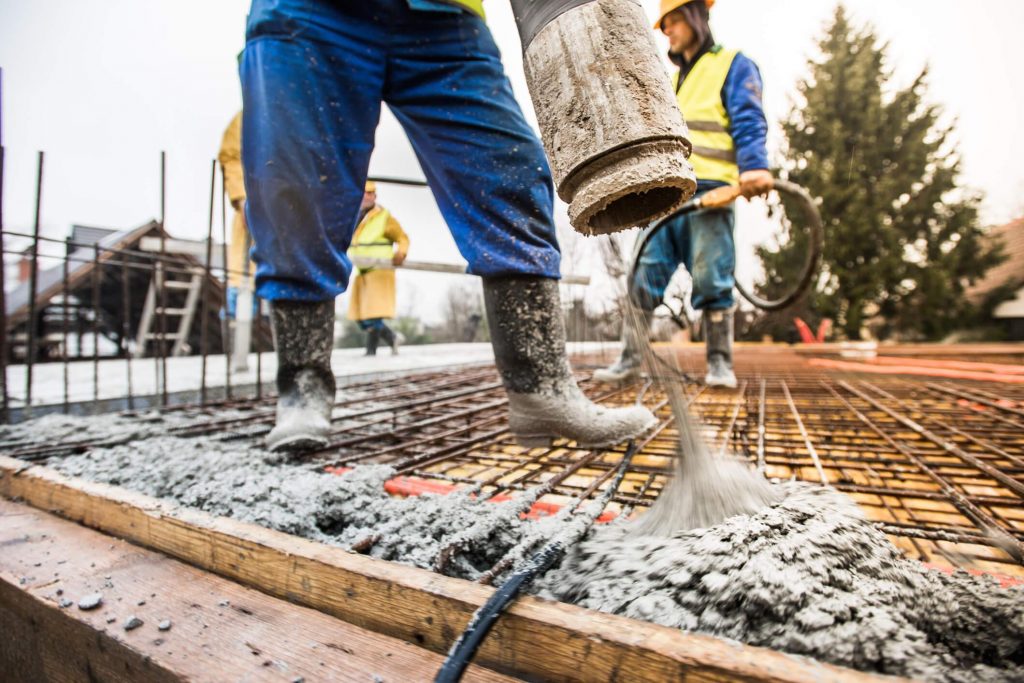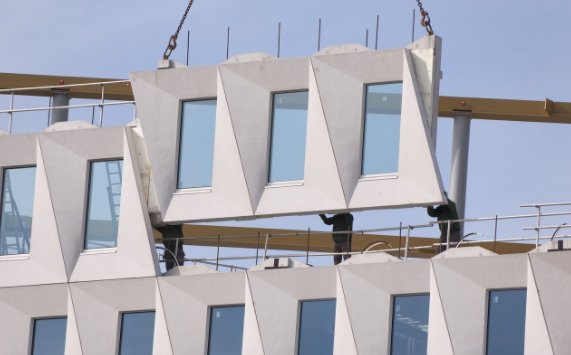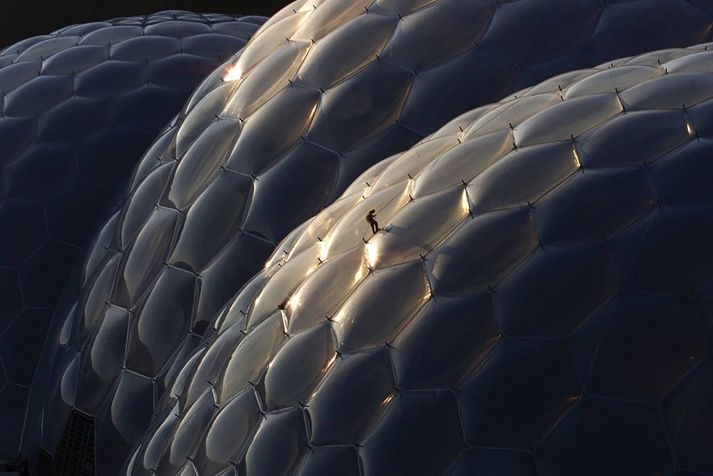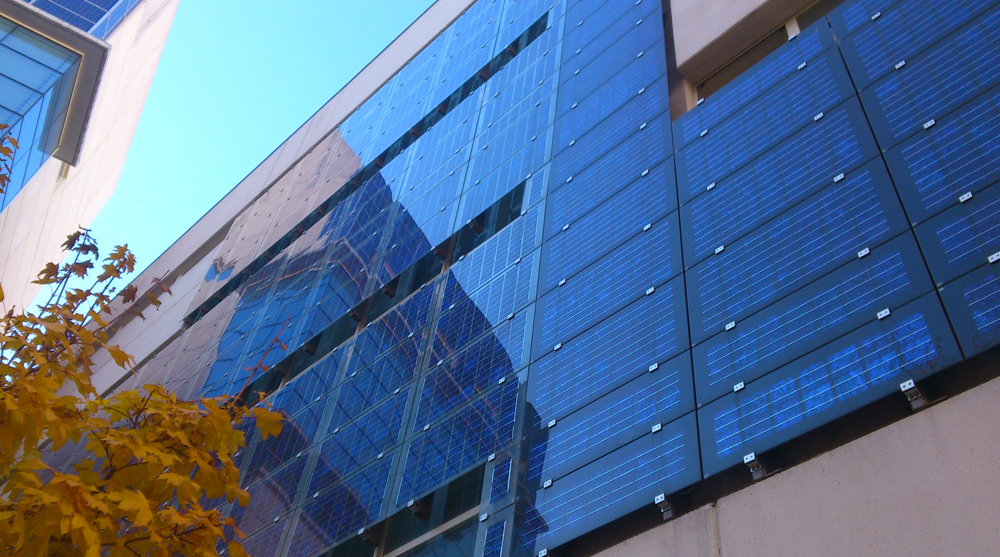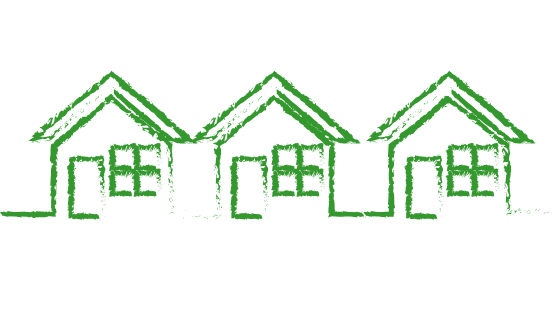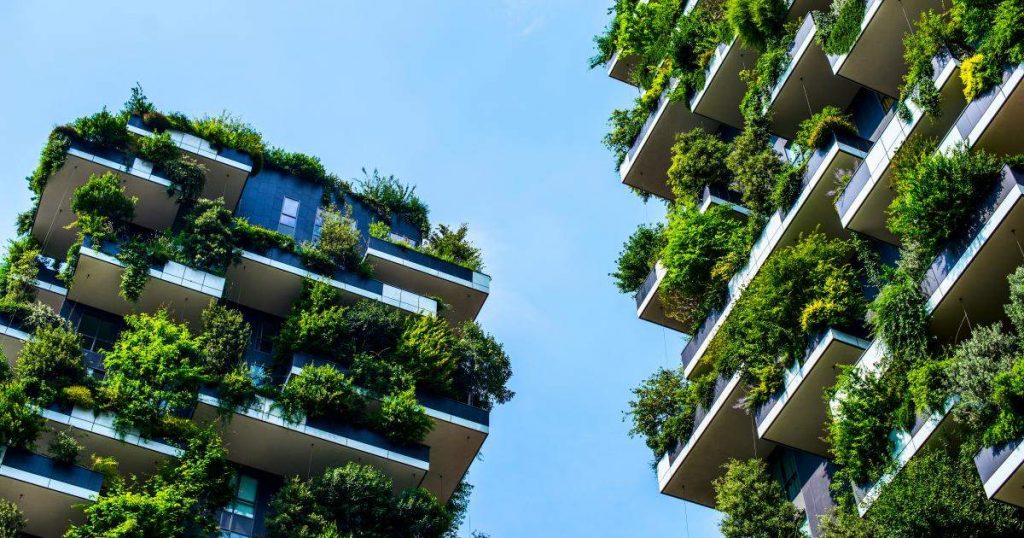Purposes of the future architecture:
As the times chane, people needs do to too, and so does the architecture. In the near future the architecture’s goals are going to be satisfing the social needs in a functional, effective and aesthetically pleasing way. Every day we become a longer-lived society, involving a greater number of inhabitants in the world. This situation leads us to problem: a big population with less resources than the previous generations.

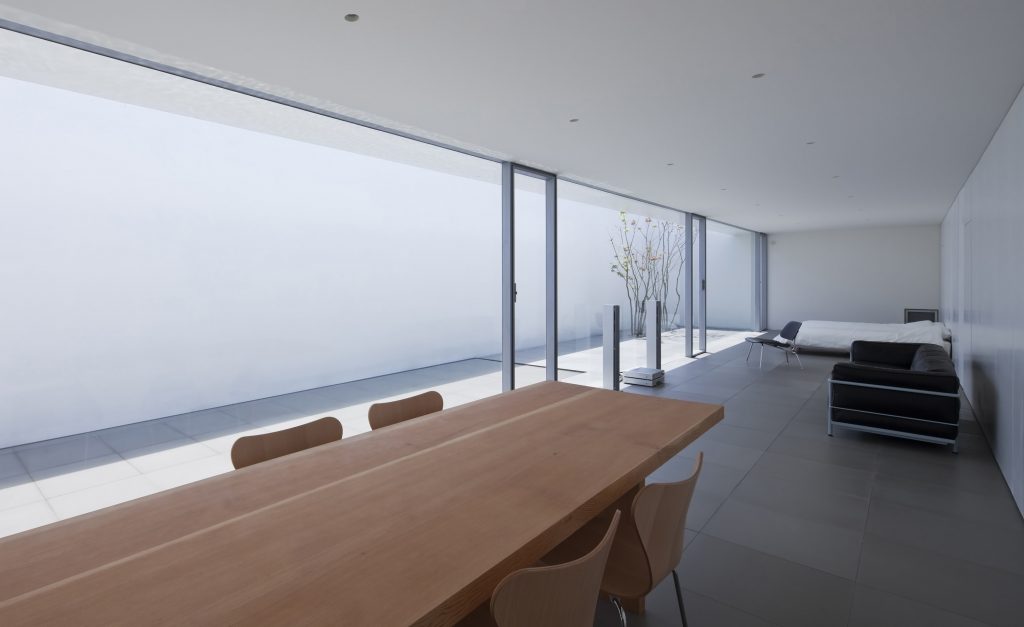
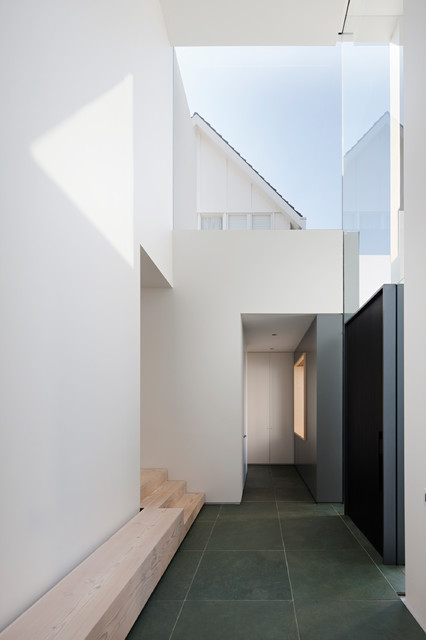
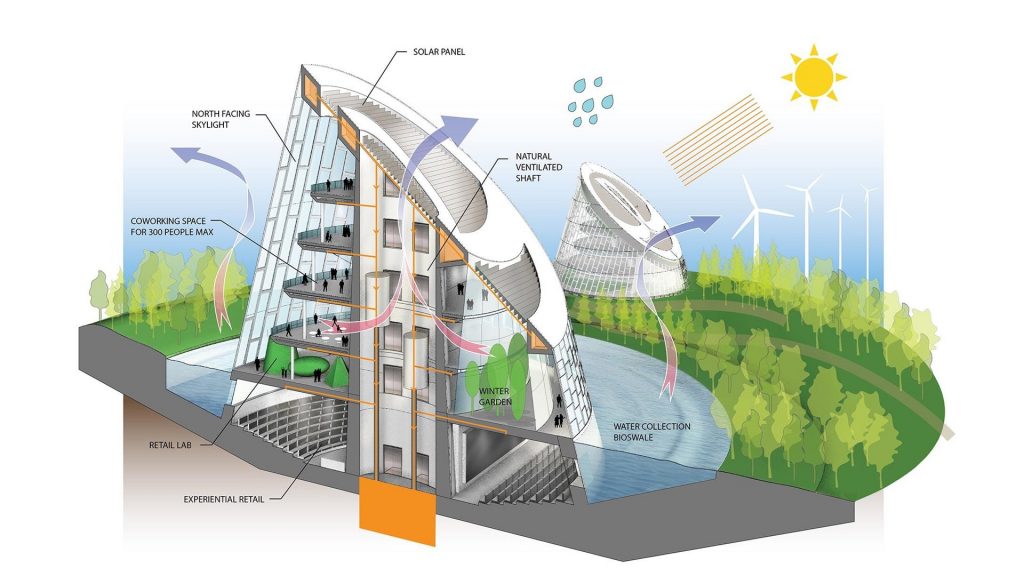
https://www.constructiontuts.com/sustainable-construction/
Besides, the reality of the global warming creates the necessity of change our lifestyles. As a consequence the future’s social needs would be: Shelf to the big population due the big mass of people the new architecture for living would be reduced to less space. Then the food supplies with a friendly environment using environmentally-friendly techniques to help not only declining changing climate but increase the number of resources.The new future could lie in high-tech greenhouses and other eco-friendly structures. Also as sustainable energy becomes a first need new power plants that replace the old pollutant ones also by involving elements such solar panels to public buildings. The buildings will be adapted with the latest technology
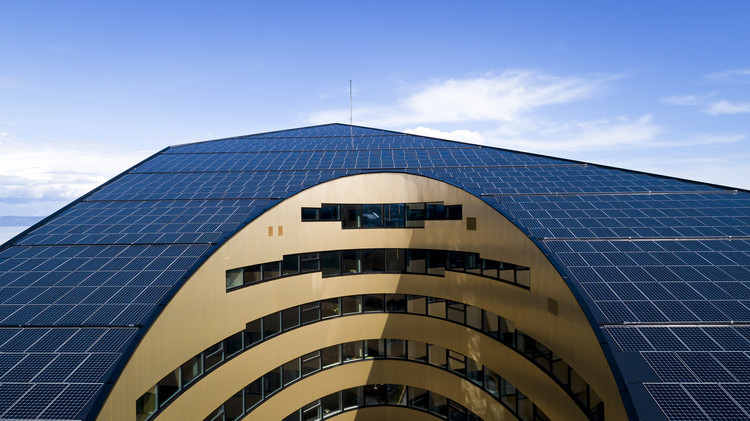
An example of a building using solar system
Construction Methods:
Nowadays the most used construction method is: mounting steel reinforcement, assembling moulds, pouring concrete, concrete hardening, desmounting moulds… As we can see the concrete is an essential component, although very easy of use, the concrete has its own disadvantages such as the fat that it is of single use and is not recyclable, in fact its lifespan is can go from 50 to 100 years.
That’s why the future architecture is going to be based on more sustainable alternatives (light, customizable, flexible and mobile) such as prefabricated parts/ houses, and mobile houses…
https://drive.google.com/file/d/1BTSOGPDA6Othz_m2uc–8iYtZ46FyFfU/view?resourcekey, Source: Krtek ve městě / The Little Mole in the City, 1982
Smart Homes:
What is a smart home ? The concept of a smart home is based on having a set of systems with technology that automates home installations thanks to technological innovations, achieving infinite comforts for all its habitants. This type of system has increased considerably, especially in Japan and the United States, which are becoming pioneers by giving priority to technology and thus allowing control of a multitude of appliances and household appliances through home automation.
It has many advantages:
- Open and close doors and even windows.
- Control of heating and air conditioning according to the user habits.
- Connect and disconnect security alarms, connecting with the surveillance company if necessary, even when intruders try to cut cables to leave it without electricity.
- Turn on and off all the lights in the house.
- Raise and lower blinds.
- Control to alert if in an oversight the kitchen is left on.
- Fire, flood and gas system.
- Medical alarm.
But also other disandvantages:
- A significant investment is required if we want our home to be adapted to technological functionalities.
- It collects data on users in all levels and in all its aspects, so privacy is reduced.
- Due to the complexity of automating digital houses, we need more technology that in turn will produce an increase in waste.
- Calculating the price of a technologically advanced home in relation to standard construction is almost impossible. It depends a lot on the technology that is used, on how many elements we want to automate in the house, on our needs…
Some of the improvement that have been made nowadays are the facilities to care for eldery people it is possible to program the lights to turn on at a certain time of day, increasing their intensity as the hours go by, or they can turn on and off automatically when the person enters certain rooms. Besides the electrical efficiency it includes efficient electronic devices that, through their integrated management, manage to generate savings in water, electricity and fuel.

Appearance:
Many of us (architecture students and professors) have already thought about this before: HOW WILL BUILDINGS AND ARCHITECTURE IN GENERAL LOOK LIKE IN THE NEAR FUTURE?
Unfortunately no one really knows, but the good thing is THIS GIVES US MORE FREEDOM TO THINK TO IMAGINE TO CREATE AND TO CONCEIVE especially as future architects.
Taking into account the environmental crisis that has become a characteristic of our century, it is predictable that from now on the building will have a more eco friendly approach.
Counter to the MODERNISM for example that uses concrete as the main element of construction and in which the building are pretty similar with blocks, direct lines and very little colors, in the future we will eventually see buildings that include vegetation, water, where the structures don’t follow an specific line, taking into consideration the air too as main element.
The materials used are going to be: wood (such as TIMBER (inexpensive, light, and easy to work with during construction)) , plastic (as a tool to build more lighter and less dense structures), glass ( as a constructive element with isolation and thermoregulation and not only for its aesthetic appearance)
Environment:
Sustainable architecture is all that is aimed at respecting the natural environment, having as its main objective saving energy during its occupation and creating the lowest carbon footprint when building it. Thus the energy efficiency consists of:
- THE TYPE OF CONSTRUCTION
- MATERIALS USED
- ALL THE PROCESSES CARRIED OUT
- THE AREA IN WHICH IT IS BUILT
- NOT ENDANGER NATURAL ENVIRONMENTTHE SPECIES THAT INHABIT IT AND ITS SURROUNDINGS.
Bibliography:
https://www.modlar.com/news/219/materials-changing-the-future-of-architecture/
https://www.azuremagazine.com/wp-content/uploads/2018/06/michael-green-reinventer-paris.jpg
http://www.constructionexec.com/article/take-advantage-of-innovations-in-prefabrication-and-modular-construction
Sustainable Construction Overview


